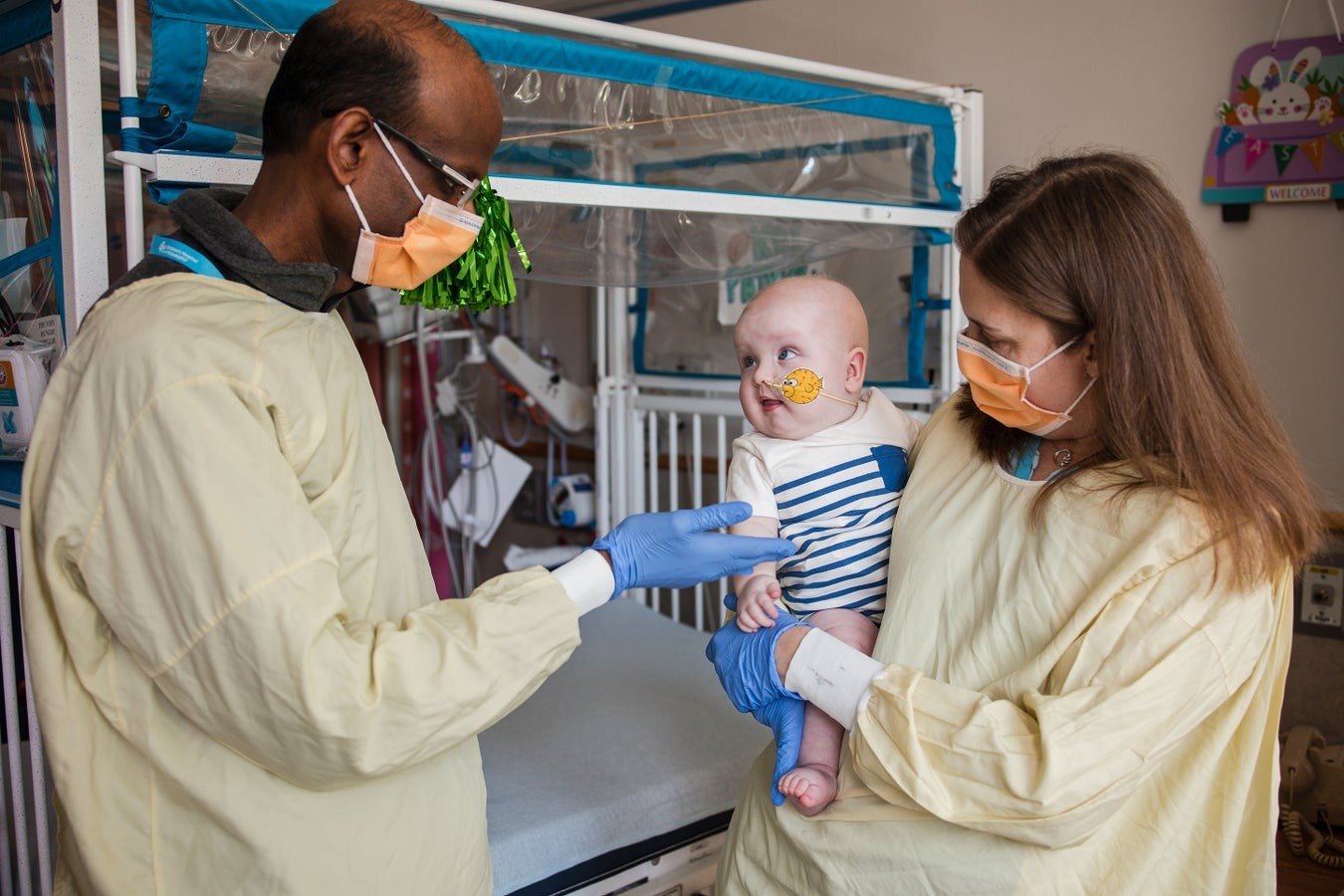Un bebé con una enfermedad genética devastadora está prosperando después de convertirse en la primera persona conocida en recibir una terapia CRISPR personalizada, diseñada para corregir su mutación específica causante de la enfermedad. Se trata de un enfoque ambicioso que los investigadores esperan que inspire a otros a utilizar CRISPR para tratar enfermedades genéticas ultrarraras. «Este es realmente el futuro de todas estas terapias génicas y celulares».
A baby boy with a devastating genetic disease is thriving after becoming the first known person to receive a bespoke, CRISPR therapy-for-one, designed to correct his specific disease-causing mutation.
Little KJ Muldoon, now nearly ten months old, is doing well after receiving three doses of a gene-editing treatment to mend a mutation that impaired his body’s ability to process protein, his parents told reporters this week. But it is too soon to use the word “cure”, says Rebecca Ahrens-Nicklas, a pediatrician at Children’s Hospital of Philadelphia in Pennsylvania, and one of Muldoon’s physicians. “This is still really early days,” she says. “We know we have more to learn from him.”
To reach this point, an international team of clinicians and researchers in industry and academia, with support from US government funders and regulatory agencies, raced to develop Muldoon’s therapy in a mere six months. Yet, the drug that it developed, described in the New England Journal of Medicine on May 15, is specific to Muldoon’s genetic sequence and will probably never be used for another person, says Ahrens-Nicklas.
It’s an ambitious approach that researchers hope will inspire others to harness CRISPR to treat ultra-rare genetic diseases. “This truly is the future for all of these gene and cell therapies,” says Arkasubhra Ghosh, who studies gene therapy at Narayana Nethralaya Eye Hospital in Bengaluru, India, and who was not involved in the study. “It’s really exciting.”
Early illness
Dozens of people have received CRISPR-based therapies for genetic conditions such as sickle-cell anaemia, but those treatments were designed to be used in many people with the same disorder, regardless of the underlying mutations that caused it. By contrast, researchers tailored Muldoon’s therapy to correct a specific genetic sequence in his genome.
Muldoon had inherited two mutations, one from each parent, that meant that he did not produce the normal form of a crucial enzyme called carbamoyl phosphate synthetase 1 (CPS-1). This compromised his ability to process the nitrogen-containing compounds produced when the body breaks down protein. As a result, his blood had high levels of ammonia, a compound that is particularly toxic to the brain.
The best treatment for CPS-1 deficiency is a liver transplant, but it would be months before Muldoon became eligible. Meanwhile, each day brought added risk of brain damage or death: only about half of babies with severe CPS-1 deficiency survive long enough to receive a transplant.


